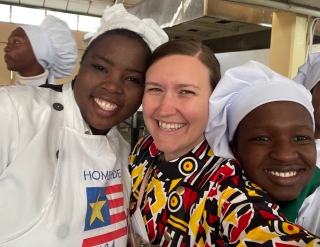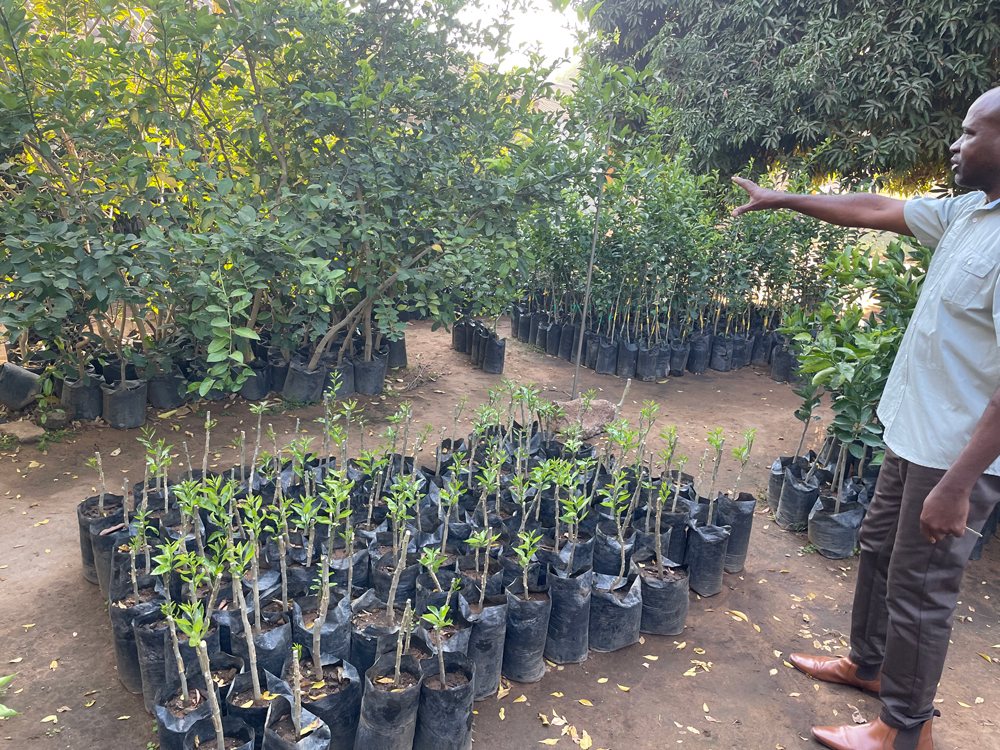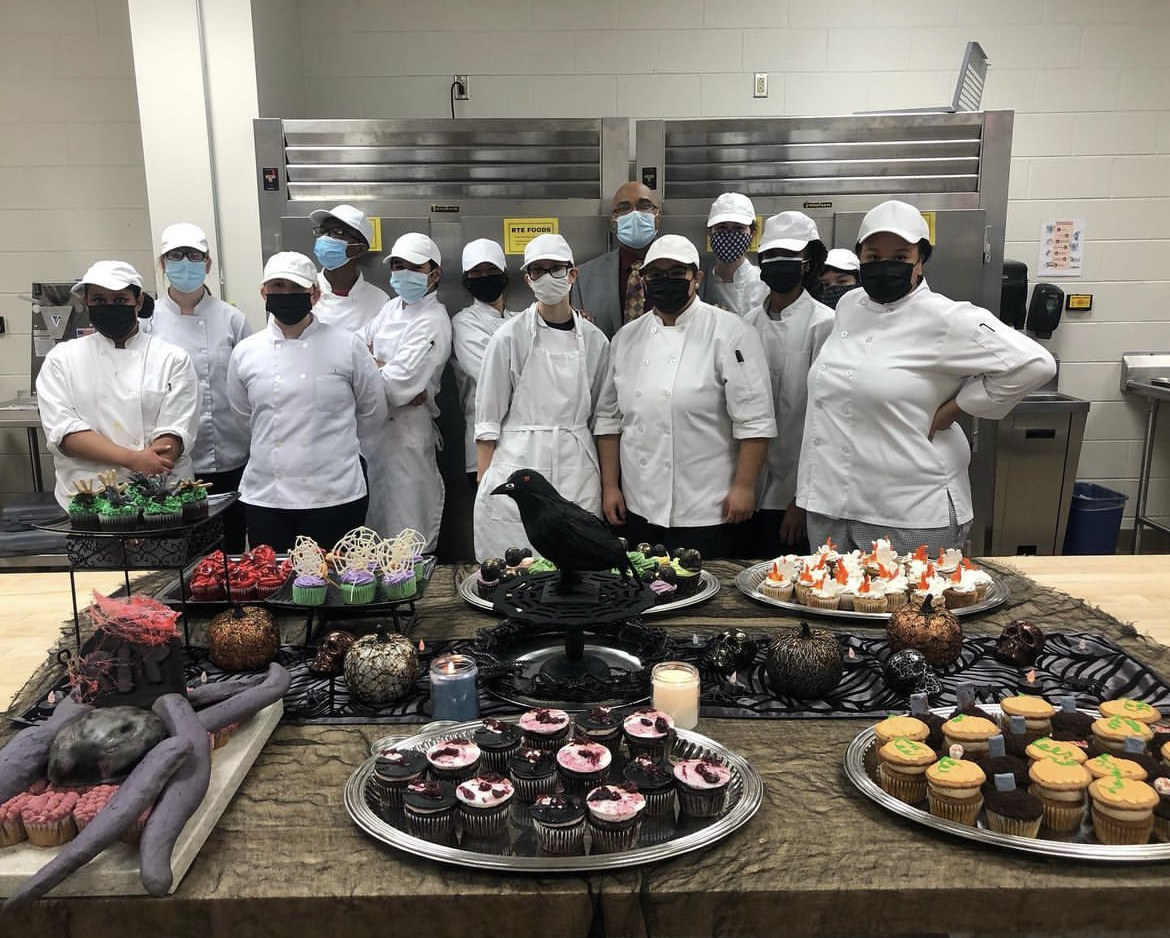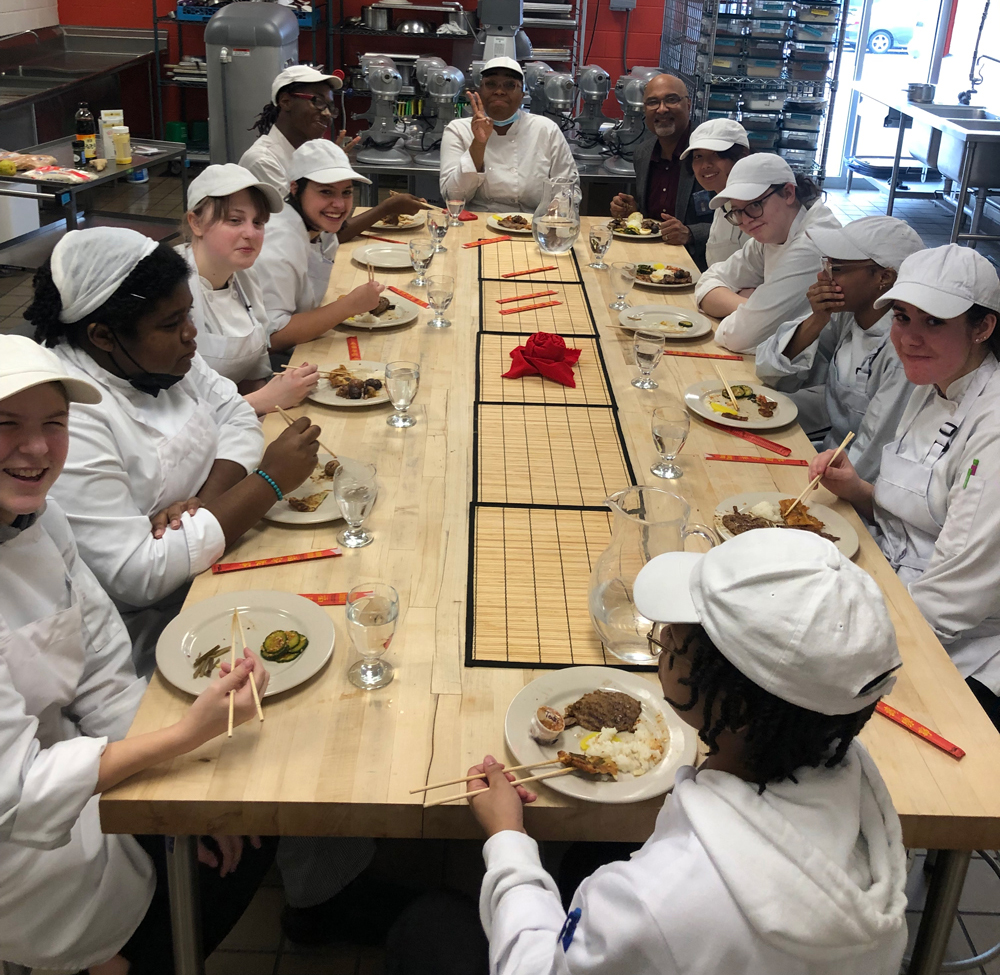
Creating Life Skills by Teaching Self-Sufficiency and Instilling an Entrepreneurial Spirit
31 October 2023Entrepreneurial skills are more than opening a business: It's how to be a self-sufficient and successful adult.
By Elise Chonko, Baking and Pastry Arts Instructor at the Chesterfield Career and Technical Center at Hull Street in Richmond, Va.
Feedback & comments: This email address is being protected from spambots. You need JavaScript enabled to view it.
Editor’s Note: Elise Chonko is writing a series of articles for the Gold Medal Classroom. Click here to read her first installment, “Studying Abroad is Not Reserved for Students Alone. Culinary instructor Elise Chonko and her Zambian Experiences.”
I spent a month in Zambia this past summer learning about their career and technical education and how it relates to their economy. While observing the educational system, I was constantly reminded that education must be structured to fit the economy in which it exists. Therefore, education should and must look different in different communities, cities, counties, states and countries.
Zambia is a developing nation. Only 10 percent of people have formal employment. This means most people must get creative about how they earn a living and take care of themselves and their families. The Ministry of Education and the educators in Zambia are aware of this predicament. It is for this reason that entrepreneurship is a huge part of the Zambian curriculum. It is so important that it is more than a single course offered; it is interwoven throughout nearly all courses.
With extremely limited resources in most schools and universities, it is necessary for them to model the entrepreneurial spirit through fundraising efforts. Most schools we visited hosted some sort of agricultural endeavor. Many raised a variety of crops, others raised chickens, goats, and/or pigs, all of which were available to be sold to the community and help bridge financial gaps.
 One school was in the process of raising hundreds of citrus trees they hoped to one day use to run a juice shop downtown. Think work-based learning on steroids! Since these programs were created out of necessity, not added tools for learning, they are as authentic as they could be. The Zambian teachers create great learning opportunities for their students. Additionally, these programs teach skills students can later turn into money-making opportunities in the very likely case they are not able to find formal employment.
One school was in the process of raising hundreds of citrus trees they hoped to one day use to run a juice shop downtown. Think work-based learning on steroids! Since these programs were created out of necessity, not added tools for learning, they are as authentic as they could be. The Zambian teachers create great learning opportunities for their students. Additionally, these programs teach skills students can later turn into money-making opportunities in the very likely case they are not able to find formal employment.
My observations in Zambia have me reflecting on what I can do to make my lessons more encompassing of the entrepreneurial spirit and appropriate to the economy in which my students will live. In the United States, we are likely to encourage our students to get a job working for a company instead of owning their own business. I dissuade my students from owning a business knowing eight out of 10 restaurants fail in the first five years. But, in my recent reflections, I realized teaching the entrepreneurial spirit is about more than just opening a business. It's about teaching students how to be self-sufficient adults. That’s what the teachers do in Zambia. I want to make sure I am doing the same.
This year, I am focusing on teaching my students entrepreneurial skills that will make them self-sufficient and independent. Throughout the year, I am reflecting on the question: What are the major workplace readiness skills I can incorporate to prepare my students to be self-sufficient? Teaching these types of entrepreneurship skills in the hypothetical is 10 percent as powerful as placing students in a real-world learning environment in which they use and develop these skills. I have decided to focus on problem-solving, accepting failure, and continuous learning skills to be a major focus in the projects I assign my students.
As I write this article, my baking students are planning for our annual Halloween cupcake war. (Click here to read a previous story about Elise’s Halloween cupcake war.) Each group has been tasked with designing a Halloween-themed cupcake. But this year, I have upped the ante: their cupcakes must not be Googleable and must be completely of their unique design.
This forced my students to think outside of the box and rely on the techniques they already know along with using any resources at their disposal to learn more. When we get to production, without a doubt, problems will arise; sugar glass shards will crystallize, cupcakes that were gravity-defying in their sketches will not be exempt from the laws of physics in real life, or the cupcake recipe from their favorite Youtuber will be more of a trick than a treat. All these incidents will give students an authentic opportunity to problem-solve with the help of their peers, and, if needed, their instructor. Students will have to work hard to fix mistakes throughout the process which could mean a variety of solutions, including starting over, changing the design, and even creating an entirely new design if necessary.
Additionally, students will feel the real pain of failure. They will have emotional ties to what they are creating as they have put their creativity and imagination into the products. When things go wrong, emotions will run high. Our current education system typically punishes failure. Students rarely have the opportunity to rectify their mistakes. This has given students anxiety around failure instead of understanding that failure leads to growth. By putting students in a scenario where there will likely be problems that are able to be overcome, students will hopefully start to understand the realistic expectations of the real world. Adults are expected to correct problems, not accept them.
 I want to help nourish a continuous love of learning in students. Our students have sadly learned to hate learning. I want to rekindle the excitement they used to have. In the winter, I plan on doing a global cuisine event with the details to be determined. Perhaps we choose a continent and create a menu exploring the region. For example, if we chose Asia we could do an appetizer from Mongolia, entree from Indonesia and dessert from Vietnam. Again, students will be designing and executing the menu for this service. I am hoping by giving the students the voice and choice to explore a world region they don’t know very much about, they will have fun and want to learn more about these cuisines on their own. Or maybe they will realize how much there is to learn in the culinary world.
I want to help nourish a continuous love of learning in students. Our students have sadly learned to hate learning. I want to rekindle the excitement they used to have. In the winter, I plan on doing a global cuisine event with the details to be determined. Perhaps we choose a continent and create a menu exploring the region. For example, if we chose Asia we could do an appetizer from Mongolia, entree from Indonesia and dessert from Vietnam. Again, students will be designing and executing the menu for this service. I am hoping by giving the students the voice and choice to explore a world region they don’t know very much about, they will have fun and want to learn more about these cuisines on their own. Or maybe they will realize how much there is to learn in the culinary world.
Teaching entrepreneurship skills to American students may not seem as necessary as it does to Zambian students. Americans do not need to create their own income. However, the soft skills associated with being an entrepreneur; problem-solving, accepting failure, constantly learning and growing; these are skills that all American adults need regardless of if they decide to open a business, work for a company, or raise a family. By creating authentic circumstances for our students to learn these soft skills, I hope to be able to train my learners to one day become self-sufficient adults.
